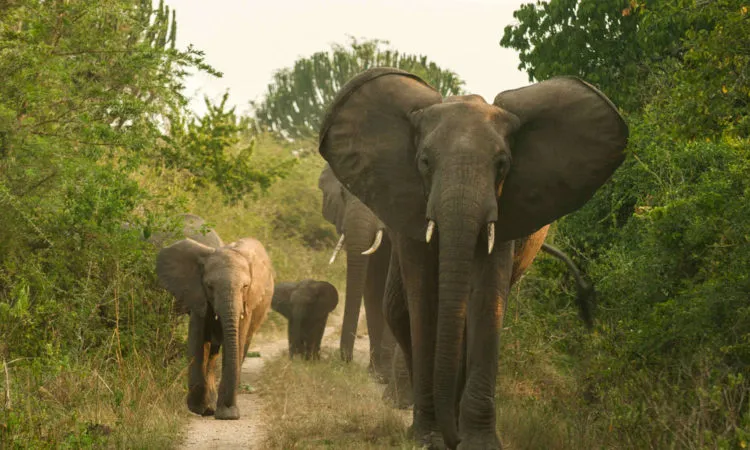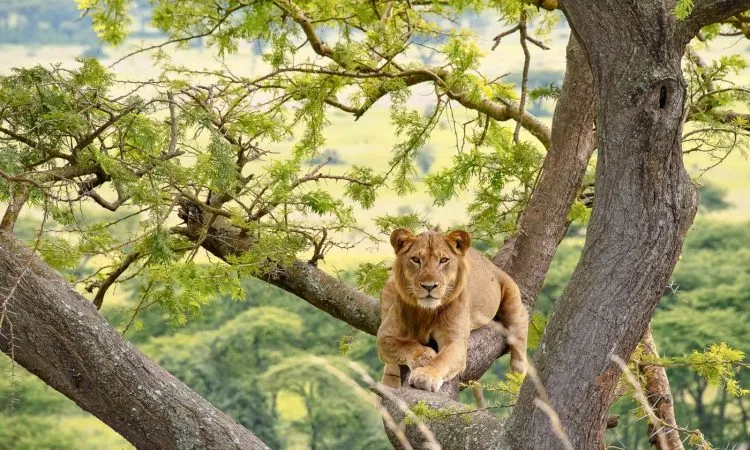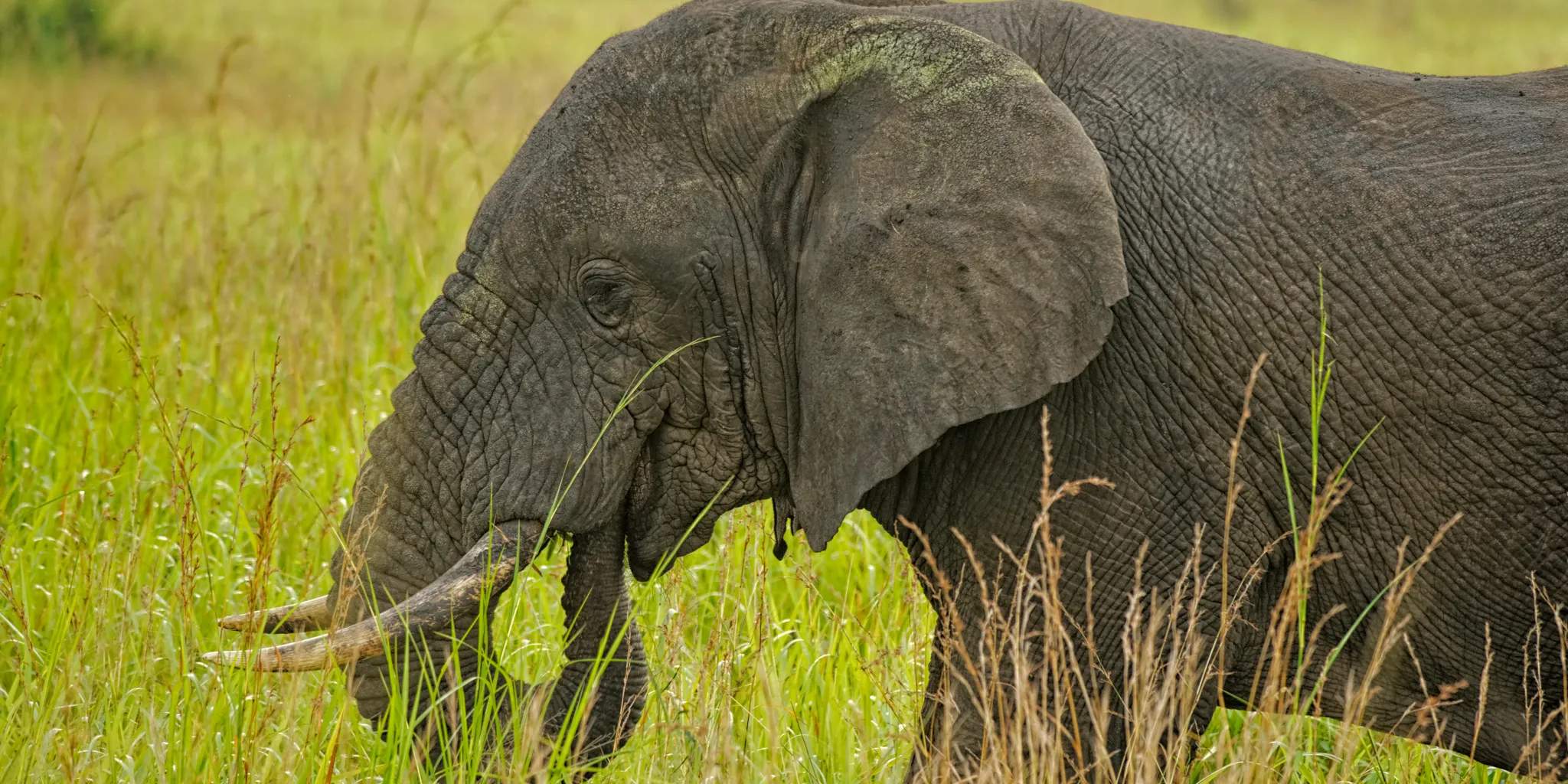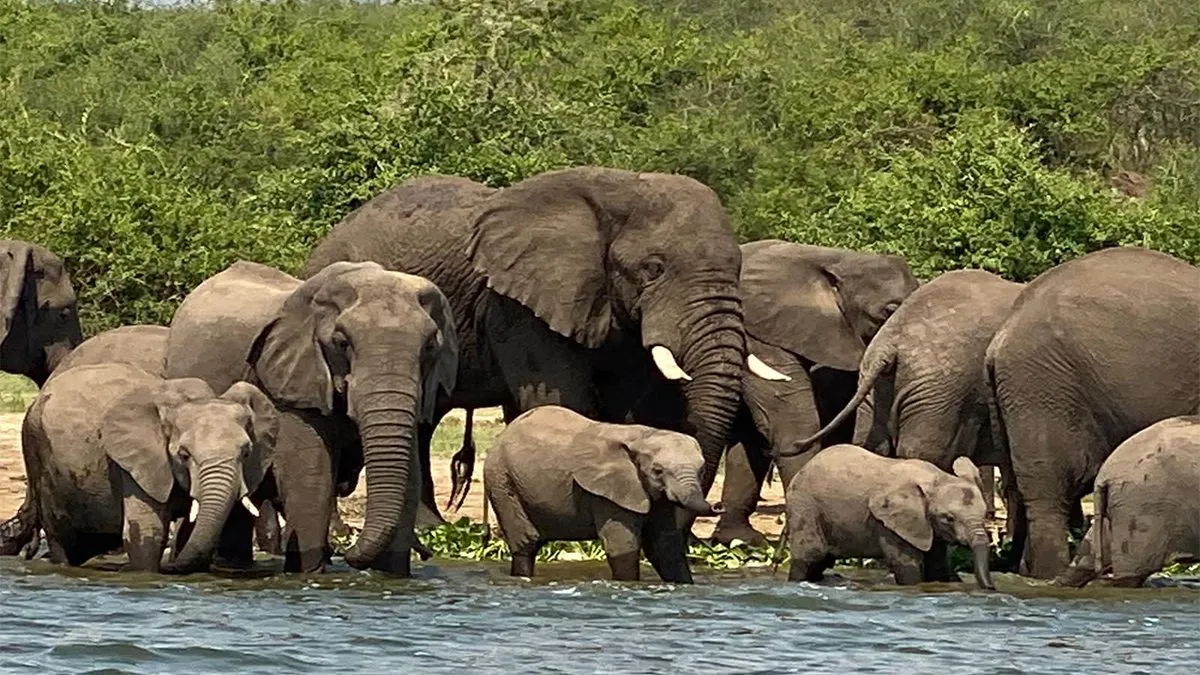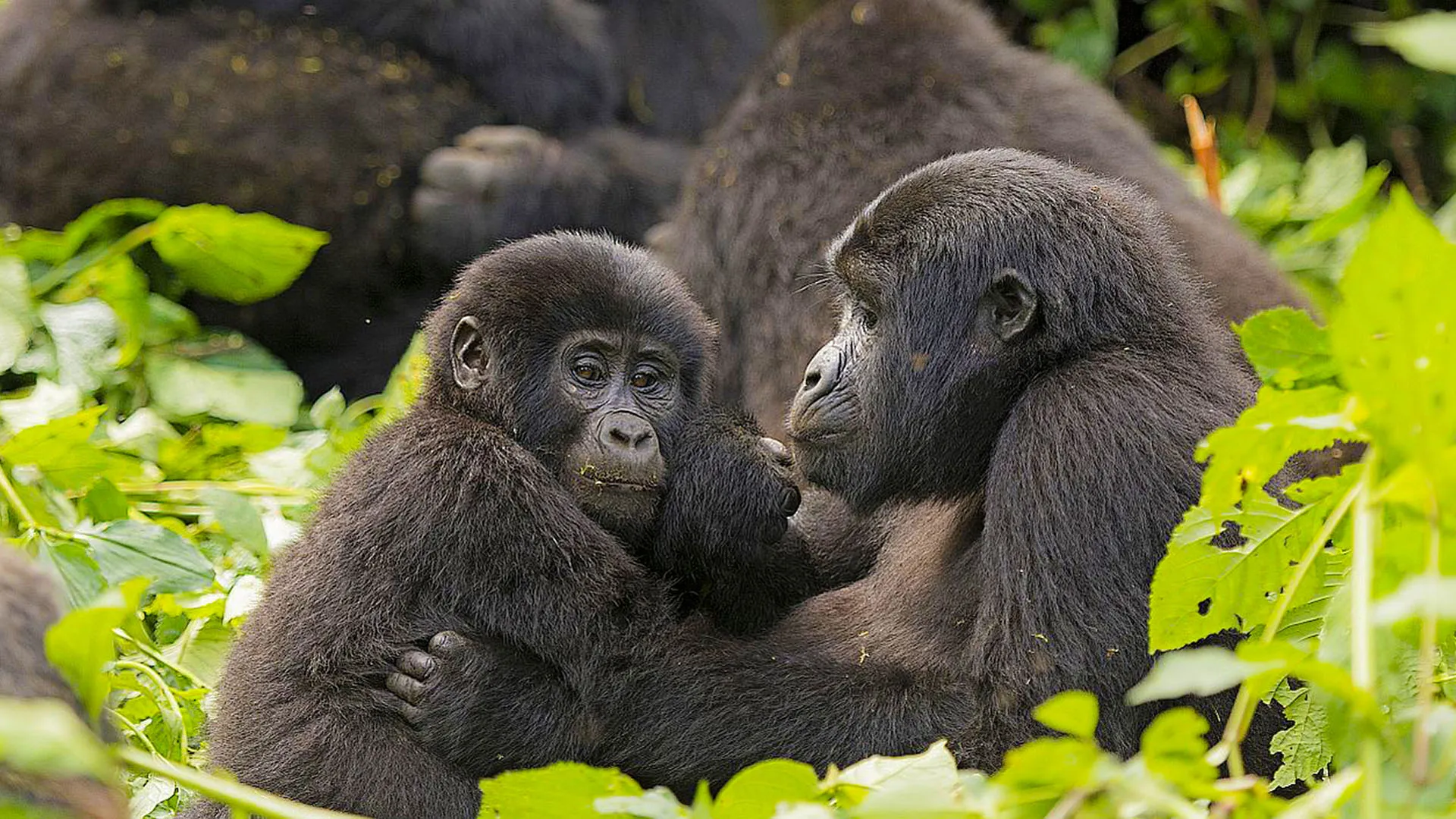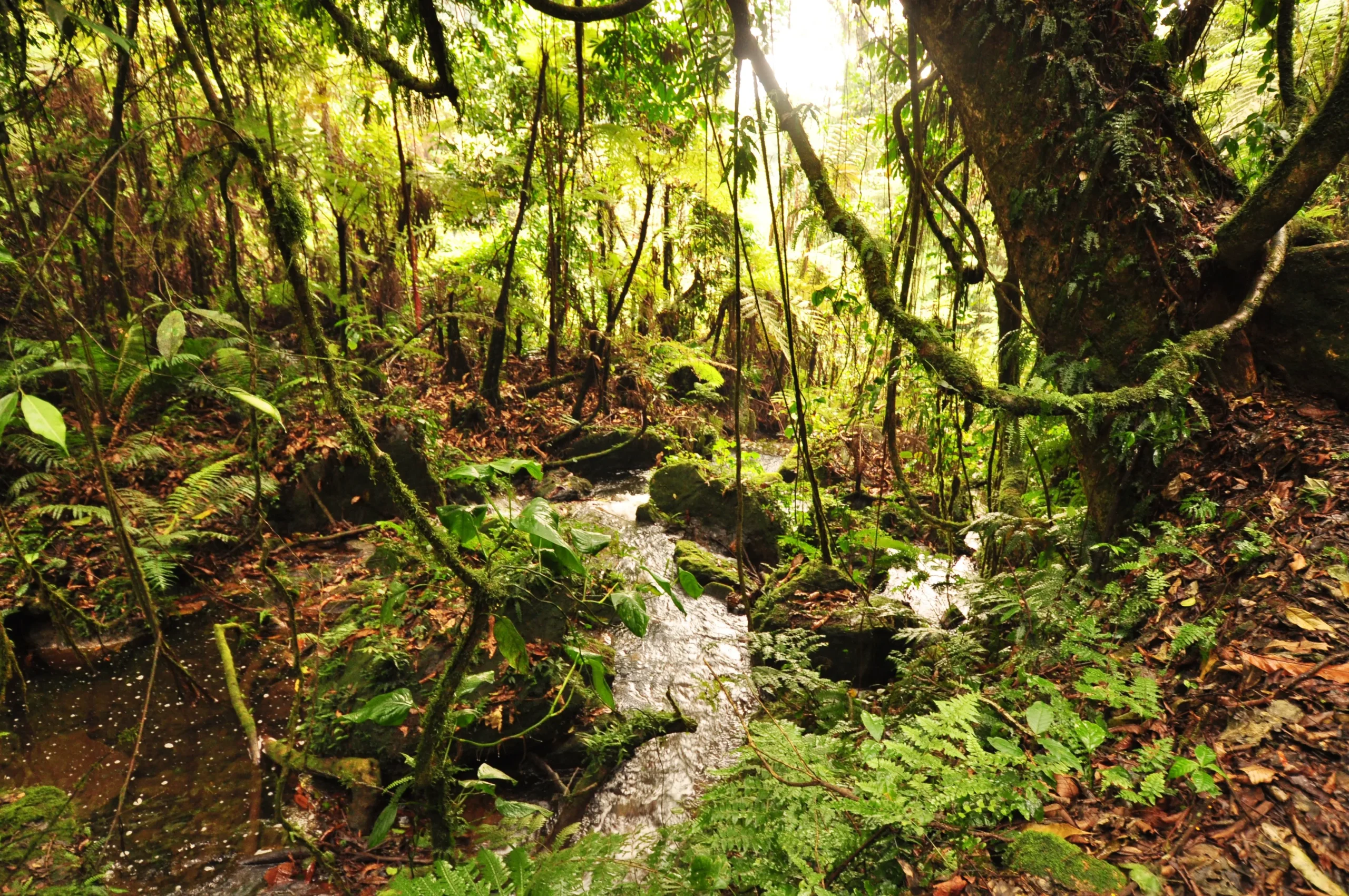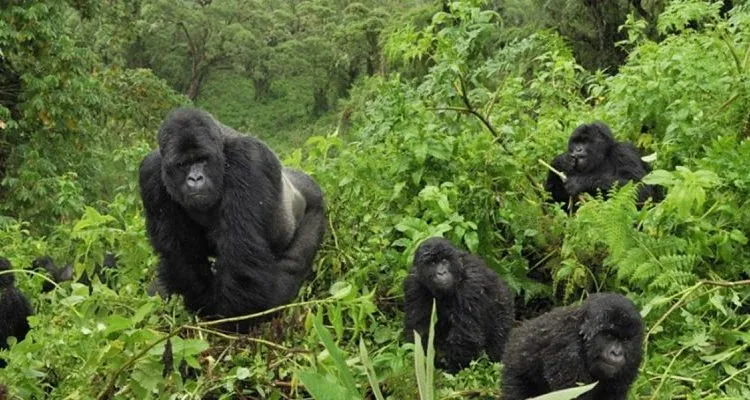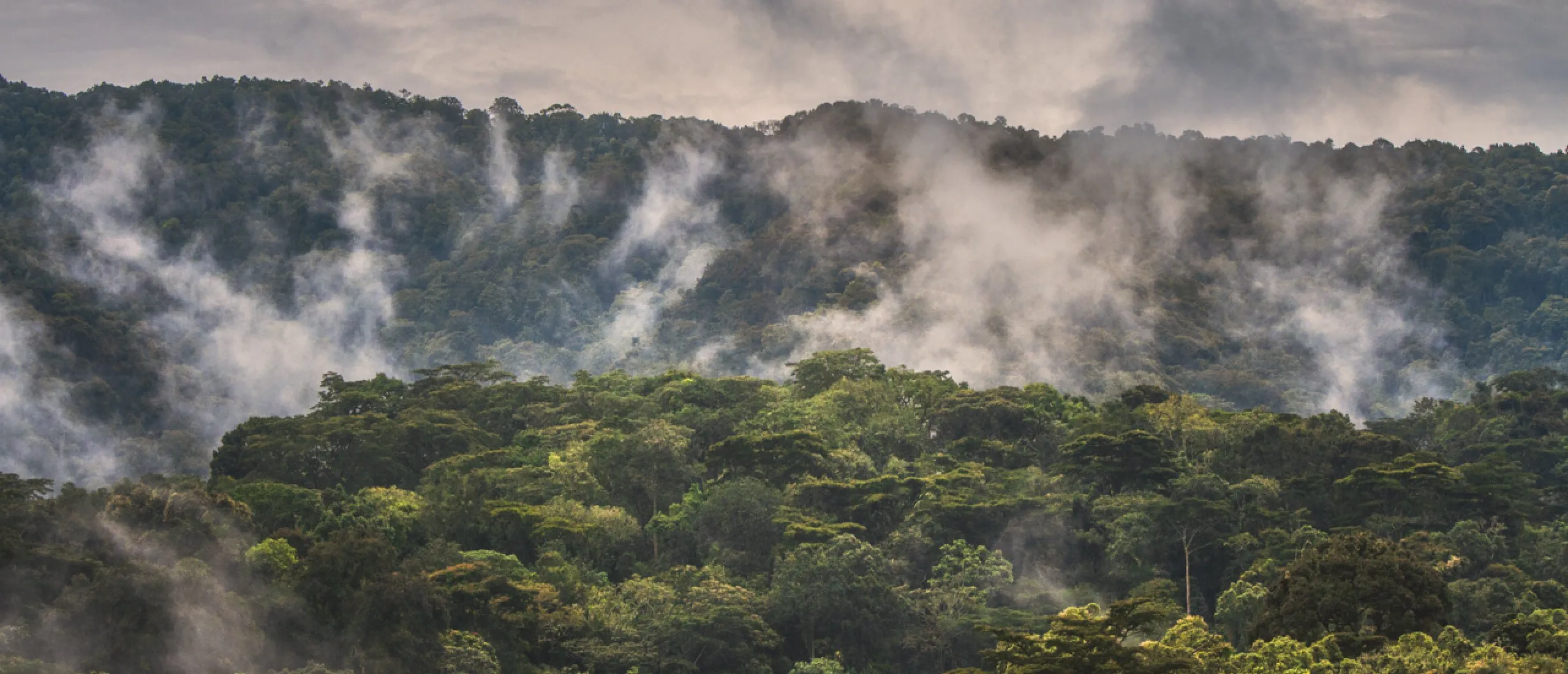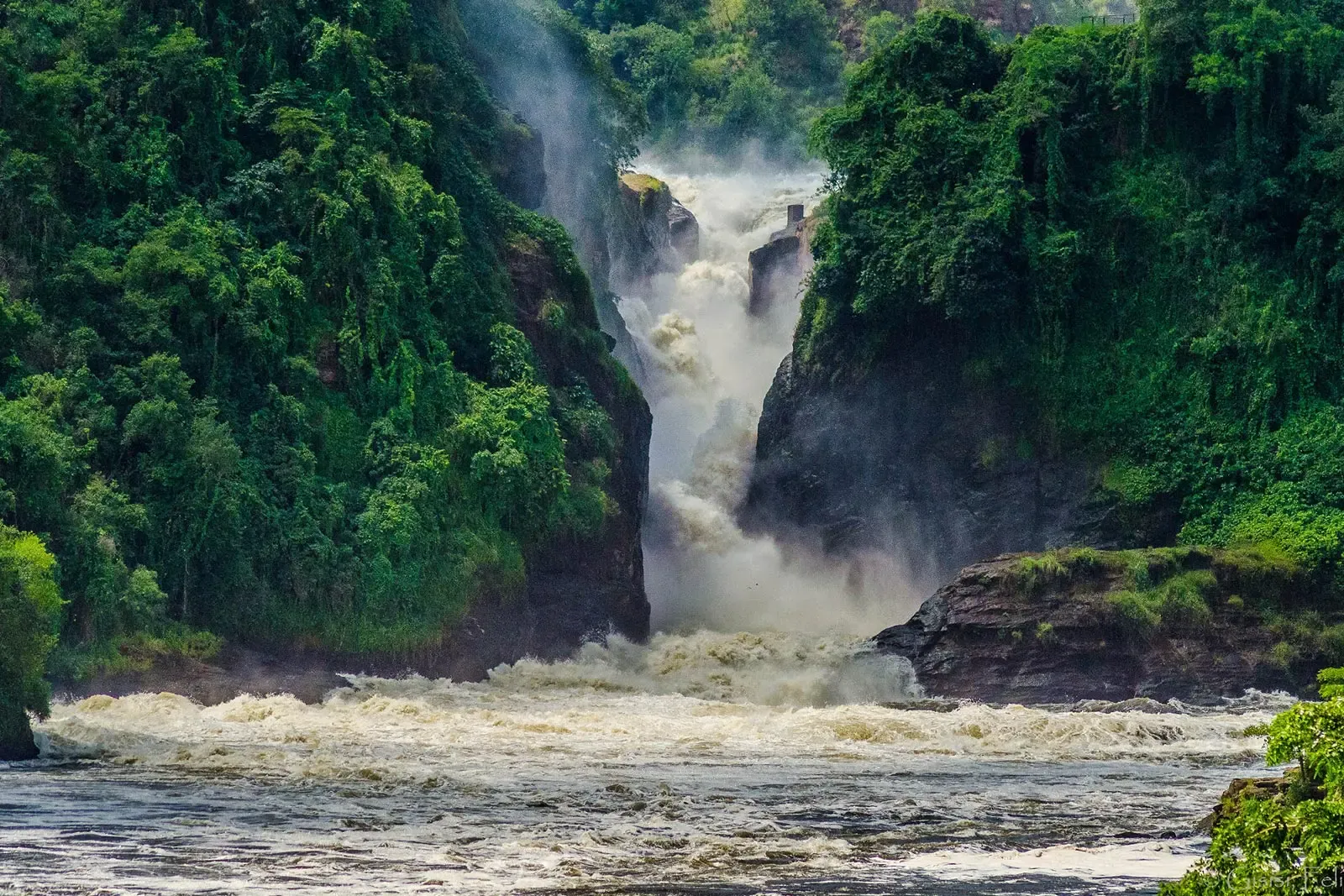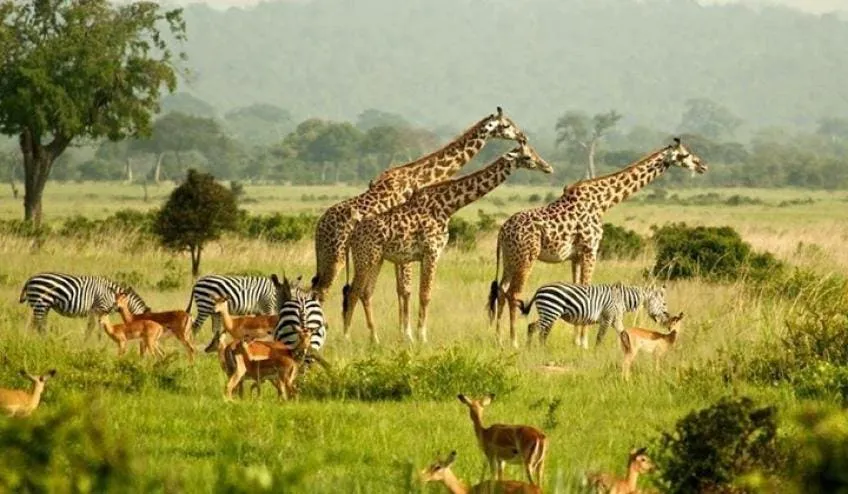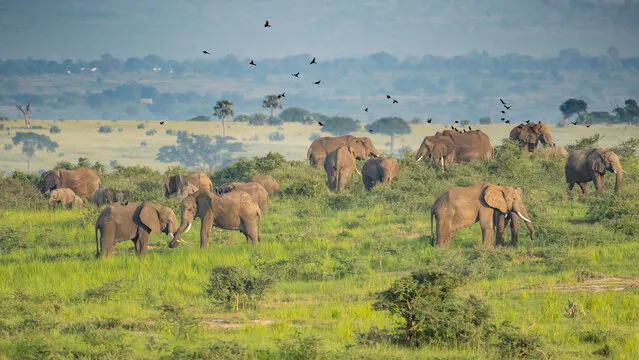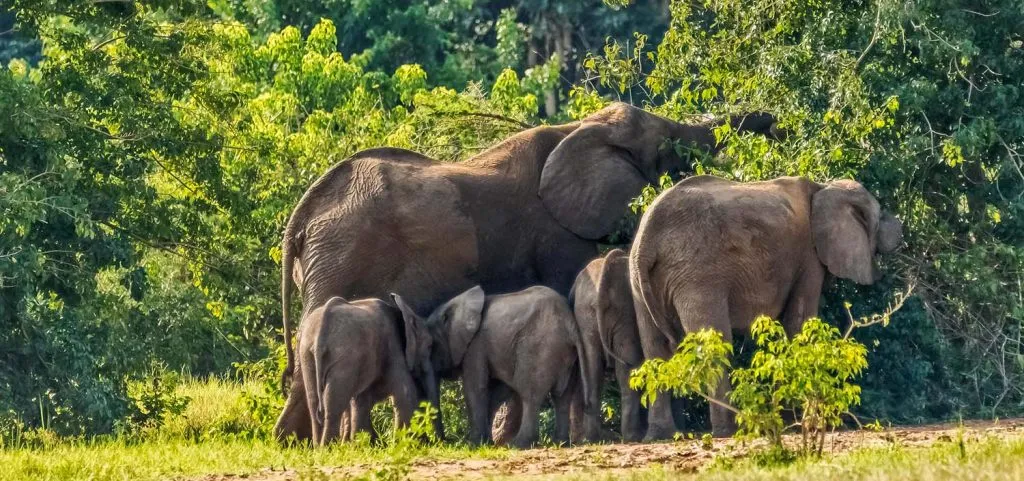Explore Uganda
Explore Uganda, The Pearl of Africa,
Uganda, known as the “Pearl of Africa,” is a beautiful country in East Africa, famous for its diverse wildlife, stunning landscapes, and rich culture. Here’s Top Attractions in Uganda or what you need to know when exploring Uganda
Queen Elizabeth National Park
The Protected Area was gazetted in 1952 as “Kazinga National Park” and two years later (1954), its name was changed to “Queen Elizabeth National Park” to commemorate the visit of late Queen Elizabeth II the same year. This Park is only 2-4 hours’ drive from Kibale National Park, and makes up several remarkable areas that include Kazinga Channel, Maramagambo Forest, Mweya peninsula Kyambura Gorge and the stunning Kasenyi sector.
At 197800 hectares, Queen Elizabeth National Park is the second largest Park in Uganda and is nestled within the Western side of the country, with its borders covering a number of districts (Kasese, Rukungiri, Rubirizi, and Kamwenge).
Facts Mgahinga Gorilla National Park
What is the best time of the year to visit Mgahinga Gorilla National Park?
Mgahinga Gorilla National Park is tropical all year round and therefore can be visited throughout the year. Nonetheless, the best months to undertake its activities is December to February and June to September because they provide favorable conditions (drier forest trails) for its outdoor activities (gorilla trekking, golden monkey tracking, mountain climbing and birding). While the wet months- March to May and October to November are avoided because of challenging conditions (muddy and slippery trails), treks (for golden monkeys and mountain gorillas) are shorter because these primates have much food thus don’t move far.
Where to stay
Mgahinga Gorilla National Park has few accommodation facilities that include Mount Gahinga Lodge, Mutanda Lake Resort, Amajambere Iwacu Community Camp, Traveler’s Nest Hotel, Virunga Hotel, Mucha Hotel Kisoro, Kisoro Tourist Hotel, Lake Mutanda Campsite, Ichumbi Hotel Kisoro, Chameleon Hill Lodge, Clouds Mountain Gorilla Lodge, to mention but a few.
Getting to Mgahinga Gorilla National Park
Ntebeko Visitor Center is 500 kilometers southwest of Kampala and 12 kilometers from Kisoro, the closest Town to the National Park. The best and most convenient way for travelers to reach Mgahinga Gorilla National Park is to take a scheduled/or chartered flight from Entebbe International Airport/or Kajjansi Airstrip to Kisoro Airstrip, which is just 45 minute drive away.
If you are hopping to go by road, take the 8-9-hour drive from Kampala or Entebbe via Masaka-Mbarara-Kisoro route with a 4×4 drive vehicle. Another road transport option is departing from Kigali to Mgahinga Gorilla National Park via Cyanika border for 4-5 hours.
Where to stay.
There are numerous accommodation options in Queen Elizabeth National Park ranging from budget to Luxury. These include Pumba Safari Cottages, Irungu Forest Safari Lodge & Campsite, Topi Lodge, Simba Safari Camp, Bush Lodge, Enganzi Game Lodge, Kazinga Channel View Resort, Buffalo Safari Lodge, Ishasha Wilderness Camp, Queen Elizabeth Safari Camp, Kasenyi Safari Camp, Elephant Plains Lodge, Tembo Safari Lodge, Mweya Safari Lodge, Katara Safari Lodge, Kyambura Gorge Lodge, Ishasha Jungle Lodge, Mbogo Lodge, and Enjojo Lodge among others.
Getting there
Situated in western Uganda, Queen Elizabeth National Park can be accessed by air and road. For air, you will take the one-hour flight to Kasese or Kihihi then proceed to the Park. For road, you can use the Kampala-Masaka-Mbarara-Bushenyi-Kasese route or the Kampala-Mubende-Fort Portal-Kasese route, and the latter is shorter.
Game drives
Game drives are the commonest activity in Queen Elizabeth National Park offering a 95% chance of encountering African bush elephants, lions, cape buffaloes, leopards, Defassa waterbucks, spotted hyenas, Uganda Kobs, common warthogs, bushbucks, Mongoose, Hippos and warthogs. If you undertake your game drive in the southern Ishasha sector, there are high chances of seeing the tree climbing lions, alongside Topis and many other wildlife species
Boat cruises
The Kazinga Channel is another excellent wildlife viewing location in Queen Elizabeth National Park, and can be explored by boat rides. Cruising 2-3 hours through this 40-kilometer long channel introduces visitors to one of the highest pods of Hippos and basks of crocodiles alongside elephants, buffaloes and a plethora of birds (aquatic and wetland species) that include the pelicans, African fish eagles, pied and giant Kingfishers, African skimmers and so much more.
Birding tours
Queen Elizabeth National Park is one of the top 5 birding hot spots in Uganda with over 620 bird species to look-out. These birding tours increase chances of encountering hooded vultures, lesser and greater flamingos, scarlet-chested sunbird, yellow-wagtails, Chapin’s flycatchers, slender billed storks, papyrus canary, African harrier-hawks, blue-napped mousebirds, open-billed stork, white-tailed lark, pin-tailed whydahs, spotted redshanks, grey headed kingfishers, African wattled plovers, water thick knee, African mourning doves, slender tailed nightjars, African broadbill, swamp flycatchers, grey kestrels, Verreaux’s eagle owl and others in their various ecosystems
Chimpanzee tracking
Chimpanzee tracking is undertaken in Kyambura Gorge, in the Eastern boundary of Queen Elizabeth National Park where a number of habituated chimpanzees live in the 100-meter deep and 500-meter wide natural gorge which is 16 kilometers long. Aside chimpanzees, Olive baboons, the black and white colobus monkeys, and Vervet monkeys also live in this Gorge.
Bwindi Impenetrable National Park
Bwindi Impenetrable National Park is one of the best safari destinations in Africa famous for its rich biodiversity and sheltering one of the rarest and most sought-after wildlife species on Earth. This Protected Area is known for its rich biodiversity and it is with no doubt that it is a special place where visitors’ travel spirits are lifted and unforgettable memories are created. The Park’s high concentration of mountain gorillas is one of the reasons why it is one of Uganda’s most visited safari destinations.
Bwindi’s size and Location
Bwindi Impenetrable National Park is situated within the Southwestern side of Uganda along the edge of the Rift Valley, bordering the districts of Kabale, Kanungu and Kisoro. This stunning Protected Area extends for only 331 square kilometers and is a renowned gorilla trekking and birding watching Paradise.
Bwindi’s history
Bwindi was gazetted into a National Park in 1991 to protect its rich diversity that includes the endangered mountain gorillas, birds and flora. It then became a UNESCO World Heritage Site in 1994 due to its extraordinary ecological significance and in so doing, 10 square kilometers were added to it to form its current size. Bwindi is divided into four sectors -Buhoma, Rushaga, Nkuringo, and Ruhija with gorilla families in each of them.
What to see in Bwindi Impenetrable National Park
Unique wildlife species
With a total of 120 mammal species, this National Park has the highest recorded number of mammal species in a Ugandan Protected Area. Of these, 10 are primate species that include the iconic mountain gorillas, L’Hoests monkeys, chimpanzees, black and white colobus monkeys, blue monkeys, Pottos, Olive baboons, Spectacled galagos, and red-tailed monkeys among others. Also sheltered in this Park are civets, black-fronted duikers, golden cats, forest buffaloes, side-striped jackals, giant forest hogs, forest elephants, clawless otters, black-fronted duikers, lots of bats and rodents among others.
Bird species
Known as one of the 33 Important Birding Areas in Uganda, Bwindi Impenetrable Forest Park is home to over 350 bird species that include 23 Albertine rift endemics, 14 species that are endemic to the Park. Some of Bwindi’s birds include Kivu ground-thrush, Handsome francolins, Neumann’s warblers, Regal sunbirds, Mountain masked Apalis, Western bronze napped pigeon, Purple-breasted sunbird, Rwenzori batis, Black billed turacos, Red-throated alethe, African wood owl, dwarf honey guide, Black-faced rufous warblers, Cinnamon-chested bee-eaters, Black bee-eaters, Shelley’s crimson wing, Western green tinker bird, Strange weavers, African green pigeon, White-bellied robin chat, bush shrikes, Grey cuckoo-shrike, bar-tailed trogon, Black-faced warblers, Chapin’s flycatchers, and the Yellow-streaked greenbul among others.
There are also over 200 colorful butterfly species in Bwindi Impenetrable National Park and majority of these are endemic to the Albertine Rift Valley. Also, about 27 amphibians and several reptiles call Bwindi Impenetrable National Park home.
Mountain Gorilla trekking
Mountain Gorilla trekking is the main reason why thousands of travelers make their way into Bwindi Impenetrable National Park each year. With over 20 habituated gorilla families here, over 160 gorilla permits are issued every day for this Park alone. These allow travelers to spend time with these Giant Apes within Buhoma, Ruhija Nkuringo, or Rushaga sector. You need a gorilla permit to access any of the gorilla families and this is only sold by Uganda Wildlife Authority at $700 per person for foreign non-residents, $600 per person for foreign residents and Shs. 150,000 for East African Community Residents. You have to be at least 15 years of ago and physically fit to trek these Giant Apes that live high in the mountains between 2500 and 4000 meters above sea level altitude.
Birding
During your visit to Bwindi Impenetrable National Park, don’t miss out on birding tours because you have great opportunities to spot Neumann’s warblers, Regal sunbirds, Mountain masked Apalis, Western bronze napped pigeon, Purple-breasted sunbird, Rwenzori batis, Black billed turacos, Red-throated alethe, African wood owl, dwarf honey guide, Black-faced rufous warblers, Cinnamon-chested bee-eaters, Black bee-eaters, Shelley’s crimson wing, Western green tinker bird, Strange weavers, African green pigeon, White-bellied robin chat, bush shrikes, Grey cuckoo-shrike, bar-tailed trogon, Black-faced warblers, Chapin’s flycatchers, to mention but a few.
Mountain cycling tours
Village walks allow you to explore the unique traditions, and cultures of the people- Bakiga and Batwa. The latter are the first inhabitants of the Central African Forests and you will learn about their simple ways of making fire from sticks, be entertained in their cultural dances and tour their small huts.
Murchison Waterfall
Murchison falls National Park is one of the most visited safari destinations in Uganda. Travelers are attracted to this National Park, known as the country’s oldest and largest for all sorts of reasons from game drives, boat cruises, sport fishing, chimpanzee trekking, bush walks to hot air balloon tours. Formerly known as Kabalega National Park, Murchison Falls National Park gives travelers a lot and a sense of wonder. It is home to the “world’s most powerful waterfalls” known for releasing over 300 cubic meters per second.
Facts About Murchison Waterfall
Covering a remarkable area of 384000 hectares, Murchison Falls is the largest National Park in Uganda and is located in Northwestern Uganda. This Protected Area’s boundaries extend to a number of districts within and beyond the Bunyoro Escarpments, in Buliisa, Nwoya, Masindi, and Kiryandongo. It will interest you to know that this safari destination also extends to the Albertine rift valley and its landscape if separated into two by the Victoria Nile River thus creating one of the most jaw-dropping landscapes you will ever be introduced to during an African safari.
Gazetted in 1952 as Kabalega National Park, this Park is the oldest in Uganda and covers an extensive area of savanna grasslands, woodlands, Rivers, wetlands and open plains. It is also part of the greater Murchison Falls Conservation Area (MFCA) that also comprises Bugungu Wildlife Reserve, Budongo Forest, and Karuma Wildlife Reserve.
what to see
Murchison Falls National Park is home to an abundance of wildlife in its different ecosystems- forest, savannah grassland, woodland, Rivers, wetlands and others. Over including 76 species of mammals, a number of reptiles (including Nile crocodiles, Monitor Lizards, and the African Rock pythons) call this Park home. Its varying ecosystems are filled with Rothschild’s giraffes, Jackson’s hartebeests, leopards, spotted hyenas, cape buffaloes, elephants, lions, side striped jackals, Topis, Oribis, hippos, Bohor reedbucks, Uganda Kobs, Olive baboons, Defassa waterbucks, Vervet monkeys, bushbucks, Oribis, blue monkeys, to mention but a few.
If you are more interested in the primates, you can visit the adjacent Budongo and Rabongo Forests where chimpanzees, vervet monkeys, Patas monkeys, olive baboons, blue monkeys, and the black and white colobus monkeys monkeys are found.
Nyungwe Forest National Park is one of the primate-rich destinations in Africa, housing up to 13 distinct primate species. Its rich biodiversity and remarkable beauty is an amazing reason why it is one of the most treasured destinations by primate lovers on Rwanda safari
Game drives
Chimpanzee trekking/tracking is the major reason why Nyungwe is a treasured primate destination in Rwanda. The park has 2 incredible chimpanzee communities to be visited each with habituated chimpanzees open to visitors to track. They include Cyamudongo and Uwinka Areas.
A total of 500 chimpanzees reside within the lush Nyungwe Forest and trekking can be done in the morning and afternoon. As you walk through the park, there is a chance to come across other primates like colobus monkeys, l’hoest monkeys, red-tailed monkeys, vervet monkeys, and others. Nyungwe chimp permits cost USD 100 per person per trek and your reliable tour operator can assist you to secure one and also plan the entire memorable trip.
Boat rides
If you are an enthusiastic birder, Nyungwe Forest NP is one remarkable birding spot you shouldn’t miss visiting. The park holds variety of Albertine rift endemic species and other forest species. On a birding tour, some of the finest birds to identify in Nyungwe Forest National Park include Rwenzori turacos, Kivu ground thrush, white-tailed crested flycatchers, handsome francolins, red throated alethe, dwarf honey guide, and montane double collared sun bird, etc.
Colobus monkey tracking
More than 400 colobus monkeys thrive within the Nyungwe Forest National Park, and they can be explored on a guided colobus monkey tracking. Treks to explore park’s colobus monkeys begin early with briefing at the park offices and visitors are accompanied by park ranger guides.
Canopy walk
Nyungwe Forest National Park is the only park in East Africa that offers a guided canopy walking tours. This is done along the Igishigishigi trail, taking you through the suspended walkway 60 meters from the ground. As you walk through, you will be viewing the treetops with a chance of spotting diversity of primates
Nature walks/hiking
Nyungwe Forest NP is one park with a good network of hiking trails making it a preferred hiking/nature walking destination. The existing trails in the park include the 227km long Congo-Nile divide trail, Umoyove, Karamba, Igishigishigi, Irebero, Bigugu, Umugote, Uwinka, Imbaraga, Rukuzi, Ngabwe, Muzimu, Isumo and Kamiranzovu trails.
Cultural/community walk
Besides exploring the park’s primates, there is also a chance to visit the local communities to enjoy authentic Rwandan cultures and traditions. During the cultural tour, you can in position to learn more about importance of community-based tourism and it is playing a great role in wildlife conservation.
Mgahinga Gorilla National Park
Mgahinga Gorilla National Park is a whole package for primate lovers and if you expect to see mountain gorillas and golden monkeys in their natural habitat, this is the perfect place to be. This small verdant Protected Area lies along the slopes of Virunga Volcanoes sheltering two of the World’s most extraordinary and endangered primate species. Mgahinga National Park sits high in the clouds at an altitude of 2227 to 4127 meters above sea level.
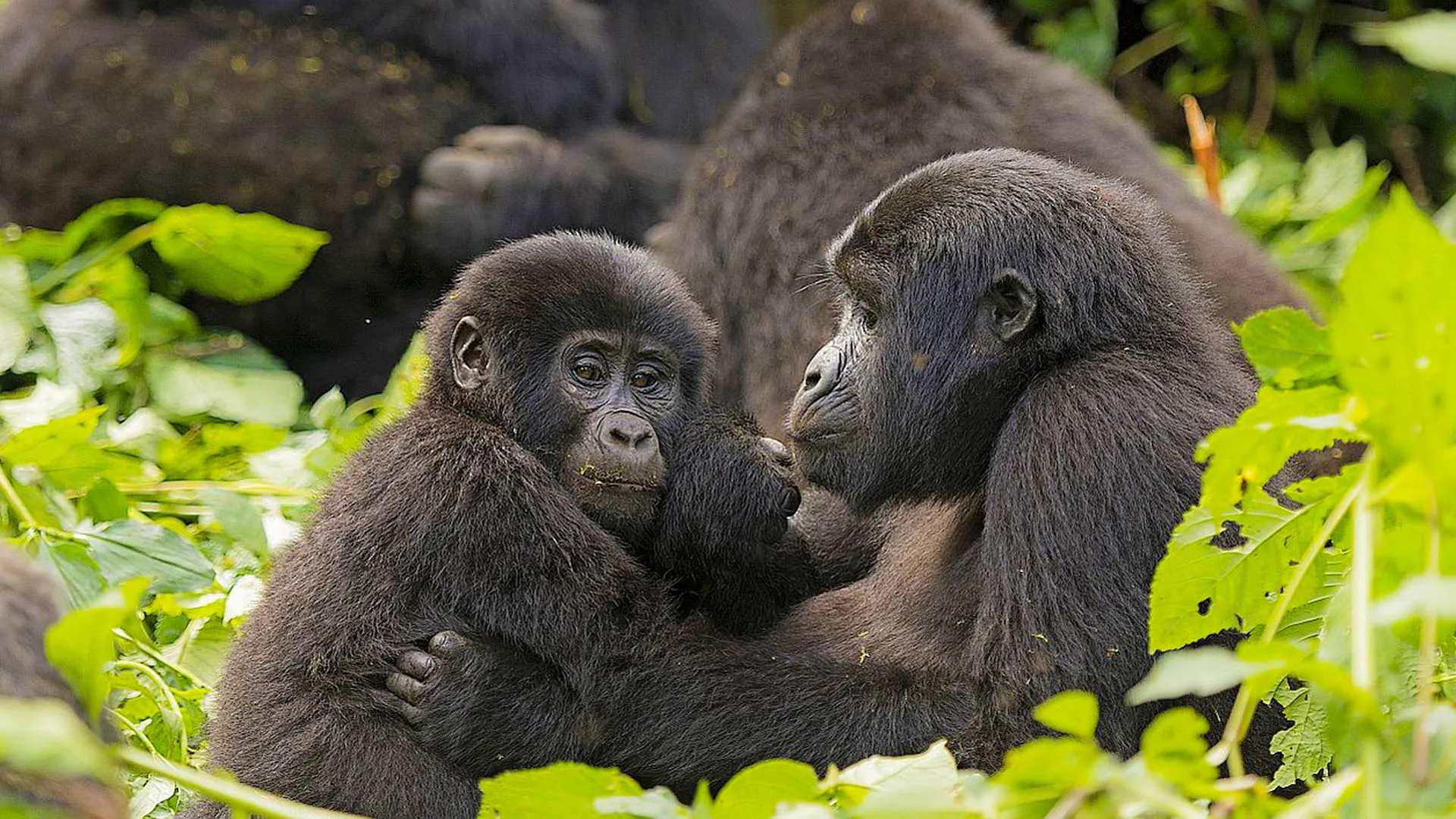
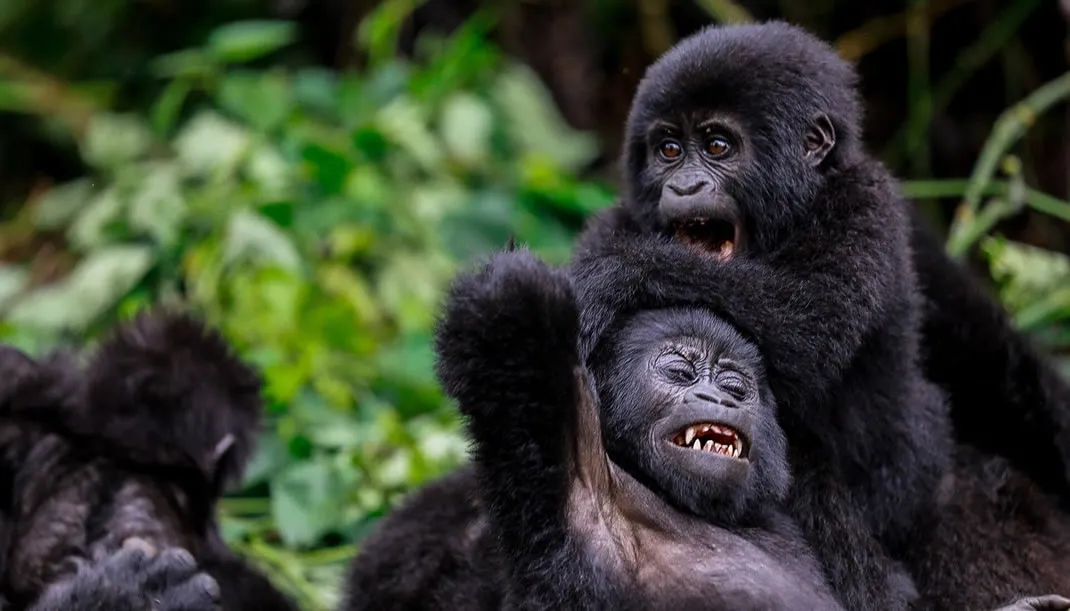
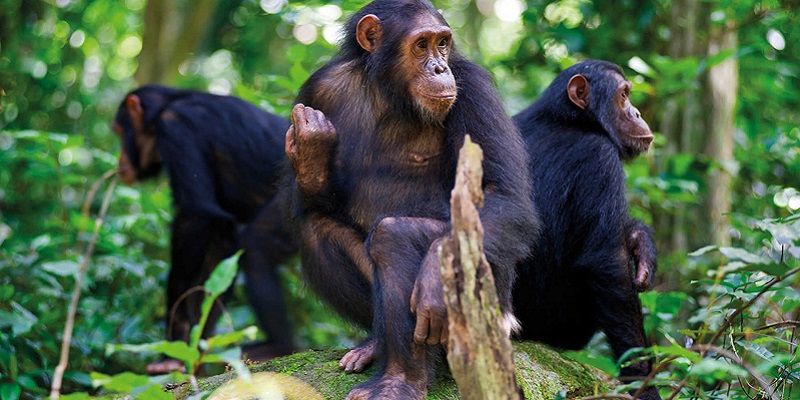
Facts About GIshwati-mukura National park
Gishwati-Mukura Park is located in Northwestern Rwanda nearby Volcanoes National Park Ruhengeri. The park is set on the ridge which separates the Congo and Nile water catchment areas in Rutsiro and Ngororero districts. This is the smallest of all the four parks in Rwanda, spanning up to 34sq.km. Gishwati-Mukura NP was officially designated as a National Park in Rwanda in 2019 and its gates opened to tourists in 2019
Tourism Attractions in Gishwati-Mukura National Park
Most of Gishwati-Mukura National Park attractions have not been fully explored and include;
Primates
Gishwati-Mukura N/Park protects a combination of unique attractions in Gishwati & Mukura Forest Reserves. They include vervet monkeys, pottos, 20 chimpanzees, blue monkeys, galagos, l’hoest monkeys, golden monkeys, black and white colobus monkeys, olive baboons, silver monkeys and others. Besides primates, the park is home to wildlife such as chameleon, Southern tree hyrax, black fronted duikers and great lake bush vipers.
Floral species
Gishwati-Mukura NP is a forest dominated park and its floral species comprise of more than 60 tree species. These include hardwood and bamboo.
Bird species
Bird record of 232 bird species survive in the Gishwati-Mukura NP diverse habitats making it one of the special locations to enjoy birding tour in Rwanda. The bird check-list in this park include black faced apalis, dusky crimson wing, handsome francolin, red-throated alethe, mountain yellow warblers, Abyssinian ground thrush, martial eagle, white headed wood hoopoe, grauer’s swamp warblers, strange weaver birds, grey crowned cranes, purple breasted sunbird, regal sunbird, and others.
Mountain Gorilla trekking
Mgahinga Gorilla National Park is one of the four safari destinations where you can trek the endangered mountain gorillas in their natural habitat. This Park has about 80 mountain gorillas and one gorilla family has been habituated for trekking. Only 8 gorilla permits are sold each day for Nyakagyezi Gorilla Family within Mgahinga Gorilla National Park.
Before walking through the forest to search for these Giant Apes, first converge at Ntebeko Visitor Center at 7:00 am for registration and briefing from Uganda Wildlife Authority Park Rangers. Gorilla treks take anywhere between 2 and 6 hours, including the one hour of observing and photographing these adorable creatures going about their daily routines. Before embarking on this life-changing adventure, first secure a gorilla permit at $700 per person for foreign non-residents, $600 per person for foreign residents and Shs. 250,000 for the East African Community residents.
Golden monkey tracking
Golden monkey tracking trails start from Ntebeko Visitor Center and allow travelers to meet face to face with the beautiful endangered primates in their natural habitat. Get the chance to meet any of the two golden monkey troops that occupy the lower slopes of Virunga Volcanoes marked by bamboo forest.
Mountain climbing
The Three Volcanoes on the Ugandan side of the Virunga Conservation Area can only be climbed from Mgahinga Gorilla National Park. It takes only 6-7 hours to climb the 3474-meter high Mount Gahinga, 7-8 hours to climb the 3669-meter tall Mount Sabyinyo and 8 hours to take on the 4127-meter tall Mount Muhabura. Expect breathtaking views of the surroundings, other Virunga Volcanoes, wildlife and bird sights while climbing any of these Volcanoes.
Colobus monkey tracking
More than 400 colobus monkeys thrive within the Nyungwe Forest National Park, and they can be explored on a guided colobus monkey tracking. Treks to explore park’s colobus monkeys begin early with briefing at the park offices and visitors are accompanied by park ranger guides.
Canopy walk
Nyungwe Forest National Park is the only park in East Africa that offers a guided canopy walking tours. This is done along the Igishigishigi trail, taking you through the suspended walkway 60 meters from the ground. As you walk through, you will be viewing the treetops with a chance of spotting diversity of primates
Nature walks/hiking
Nyungwe Forest NP is one park with a good network of hiking trails making it a preferred hiking/nature walking destination. The existing trails in the park include the 227km long Congo-Nile divide trail, Umoyove, Karamba, Igishigishigi, Irebero, Bigugu, Umugote, Uwinka, Imbaraga, Rukuzi, Ngabwe, Muzimu, Isumo and Kamiranzovu trails.
Cultural/community walk
Besides exploring the park’s primates, there is also a chance to visit the local communities to enjoy authentic Rwandan cultures and traditions. During the cultural tour, you can in position to learn more about importance of community-based tourism and it is playing a great role in wildlife conservation.
- Bwindi Impenetrable Forest National Park
- Murchison Falls National Park
- Queen Elizabeth National Park
- Mgahinga Gorilla National Park

